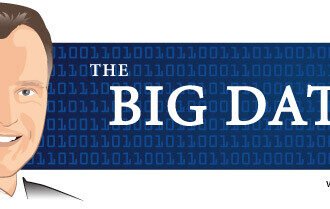If you dropped into an organization, how could you tell who did real work? Mark Madsen has developed clues.
Most people probably know him as the insightful and entertaining creator of “Clues to the Future of Business Intelligence” and more recently of “http://itc.conversationsnetwork.org/shows/detail4109.html#” But when he’s not on stage or preparing for it, he’s consulting on BI projects.
“On almost every project,” he emailed me recently, “I find people whose task can be perfectly explained by watching Office Space, the scene where the two Bobs interview Tom and he explains what he does.” Tom’s the one with “people skills” who “deals with the goddamn customers” by supplying reports to them. His secretary does the actual carrying.
Mark has developed a few clues to indicate a Tom.
1. They simply pass information along. They don’t synthesize anything, nor do they have any use for the information themselves. This is often a VP or director, usually with one or two direct reports and usually connected politically.
2. If they do anything with the information, someone else does it for them. For example, Mark asks, “What tools do you use to analyze the …
If you dropped into an organization, how could you tell who did real work? Mark Madsen has developed clues.
Most people probably know him as the insightful and entertaining creator of “Clues to the Future of Business Intelligence” and more recently of “http://itc.conversationsnetwork.org/shows/detail4109.html#” But when he’s not on stage or preparing for it, he’s consulting on BI projects.
“On almost every project,” he emailed me recently, “I find people whose task can be perfectly explained by watching Office Space, the scene where the two Bobs interview Tom and he explains what he does.” Tom’s the one with “people skills” who “deals with the goddamn customers” by supplying reports to them. His secretary does the actual carrying.
Mark has developed a few clues to indicate a Tom.
1. They simply pass information along. They don’t synthesize anything, nor do they have any use for the information themselves. This is often a VP or director, usually with one or two direct reports and usually connected politically.
2. If they do anything with the information, someone else does it for them. For example, Mark asks, “What tools do you use to analyze the information?” The answer “Excel” indicates usefulness. But, he emails, “When I get ’somebody else does it for me,’ I know I’ve found $100K to shave off the bottom line.”
3. No clear answer to “what does so-and-so do?” People usually know the organization’s problems. So when someone says, “I have a meeting with Tom,” there’s usually a wink or smirk.
Have you got indicators of your own? Please post a comment.






